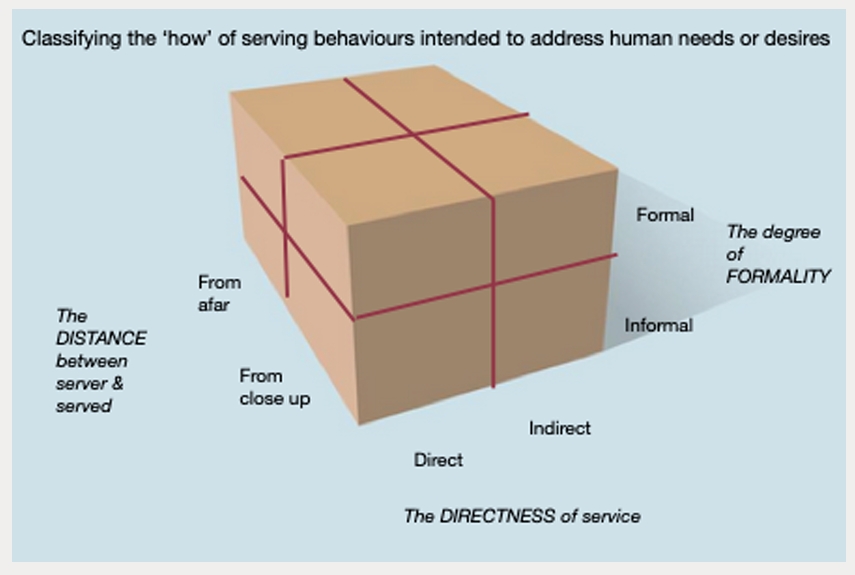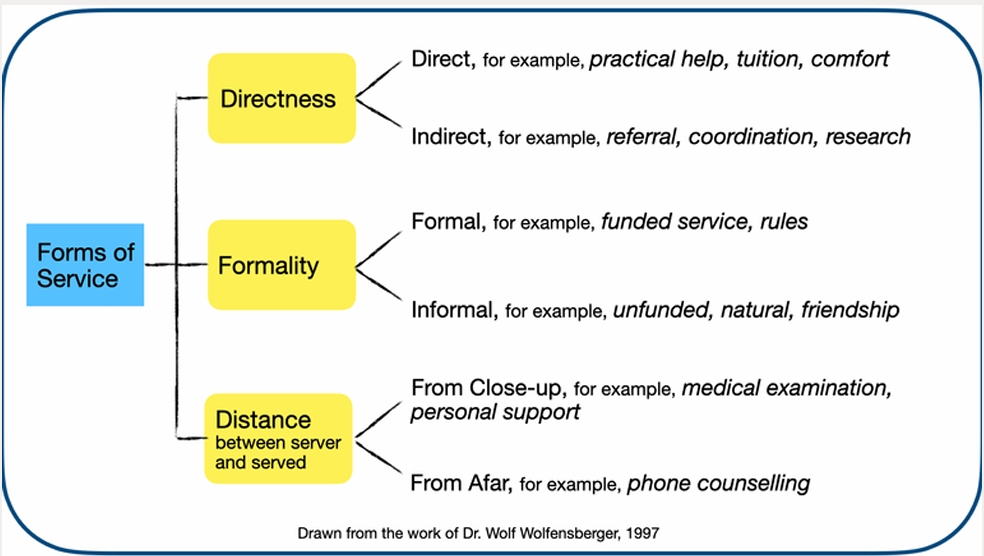Which might you like for yourself? Slicing and Dicing Service Processes
Are all services the same? Is a service by
paid workers the same as help delivered by
family? Is the latter a ‘service’?
Much of Social Role Valorisation gives us
clues about service design. By ‘service
design’, we mean the way services are
constructed to assist people.
Professor Wolfensberger helped us
understand how to go about service design
by critically evaluating existing services. Wolfensberger’s term for this was
‘Scrutinising Analysis’. This is very
effectively done through the SRV
practicum, PASSING. One of Wolfensberger’s many training
modules about human services was entitled,
‘Further ways to ‘Slice-and-Dice Service
Processes so as to make them more
amenable to scrutinising analysis’. Or, in
everyday terms, how can we analyse how
services are delivered so we can decide how
appropriate or otherwise they are?
There are many ways! This ‘SRV
Matters’ focuses on 3 key
dimensions:
a) Direct versus Indirect
Service. A direct service is one
where the helper has a face-toface connection with an
individual. An indirect service is
one that is somewhat removed
from the person. We can contrast
support to an individual to
participate in fulfilling their
employment responsibilities with
program planning and support
coordination.
This is not saying that one is better than the
other; it is saying that they are different. SRV
challenges us to find the ‘best’ form each time.
b) Close-up versus Distant Service. A closeup service involves in-person interactions. We
can contrast support to an individual in their
home with a daily phone service that rings to
check that an older person is still alive.
c) Informal versus Formal Service. An
informal service is one that is unpaid, and
offered out of a positive feeling toward the
person such as love or high regard. A paid
service is one that is rule-bound and is offered
on a fee-for-service basis.
How might this thinking help us? We can
certainly start by trying to put ourselves into the
shoes of someone receiving service by asking
ourselves, ‘what might I like if I was receiving
assistance?’ And what would be the most
effective ways to have my needs met?
Stay tuned for a future edition about the
issues that arise when we are not alert to these
dimensions.

Author: Greg Mackay www.asrva.org.au



